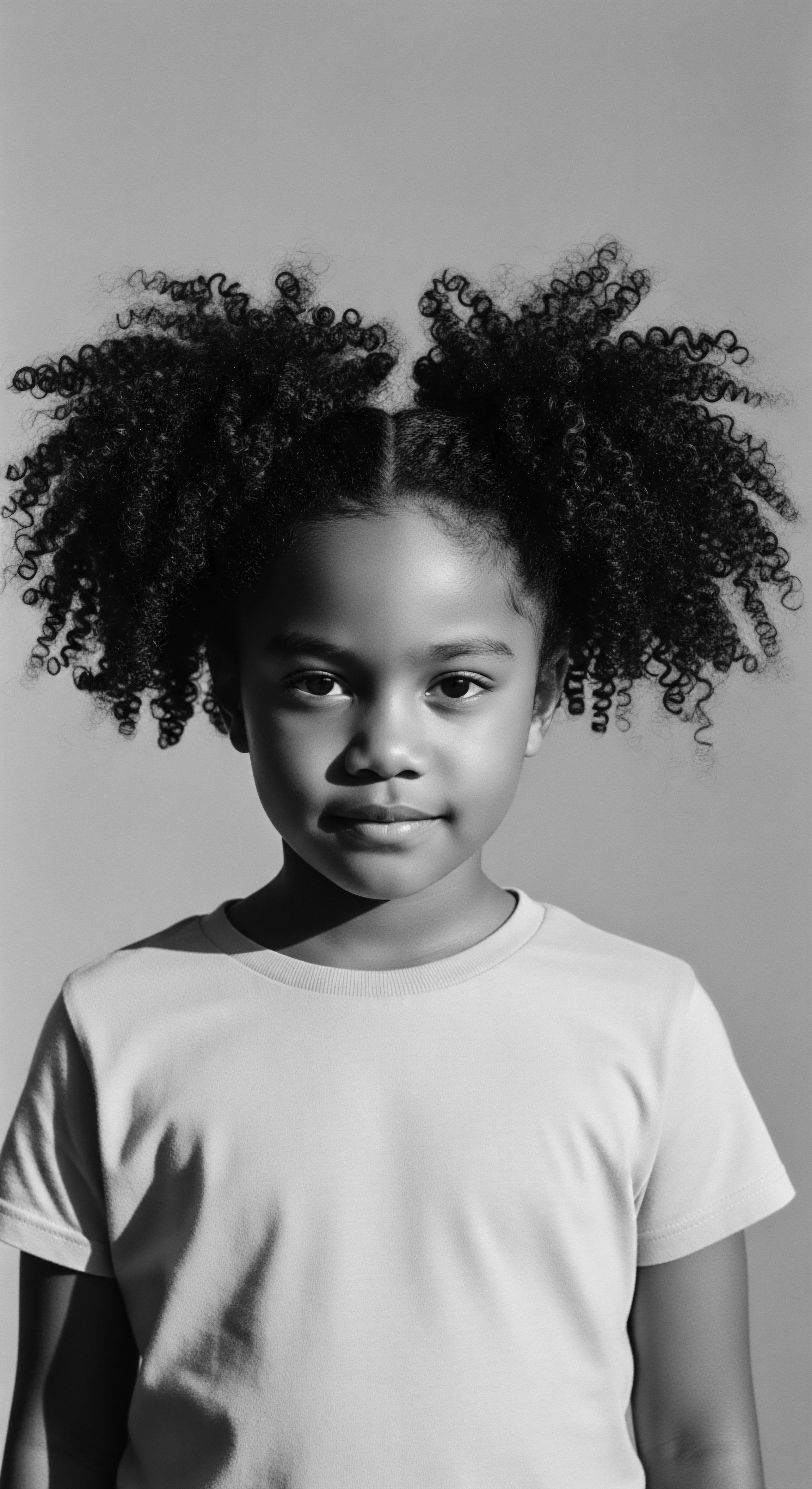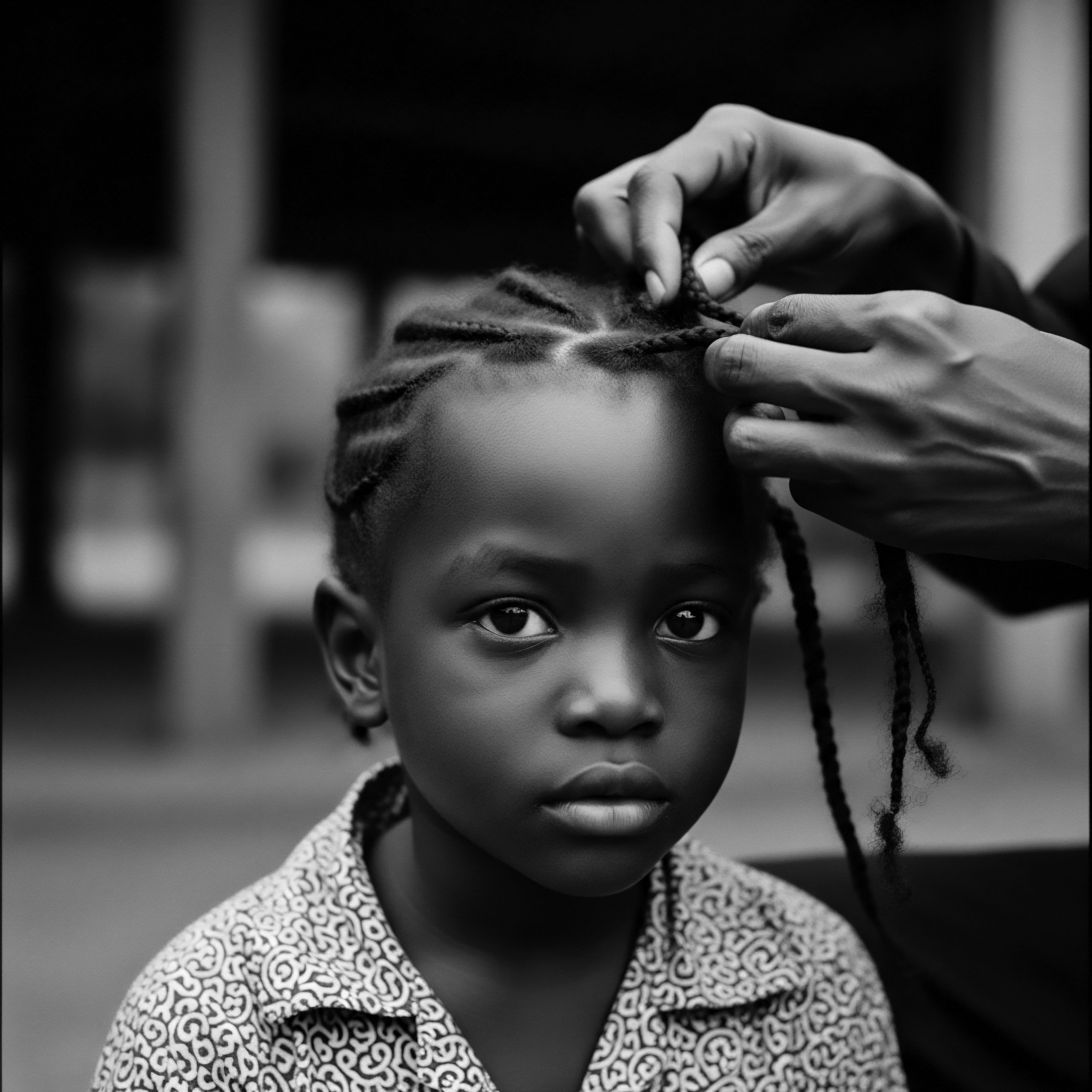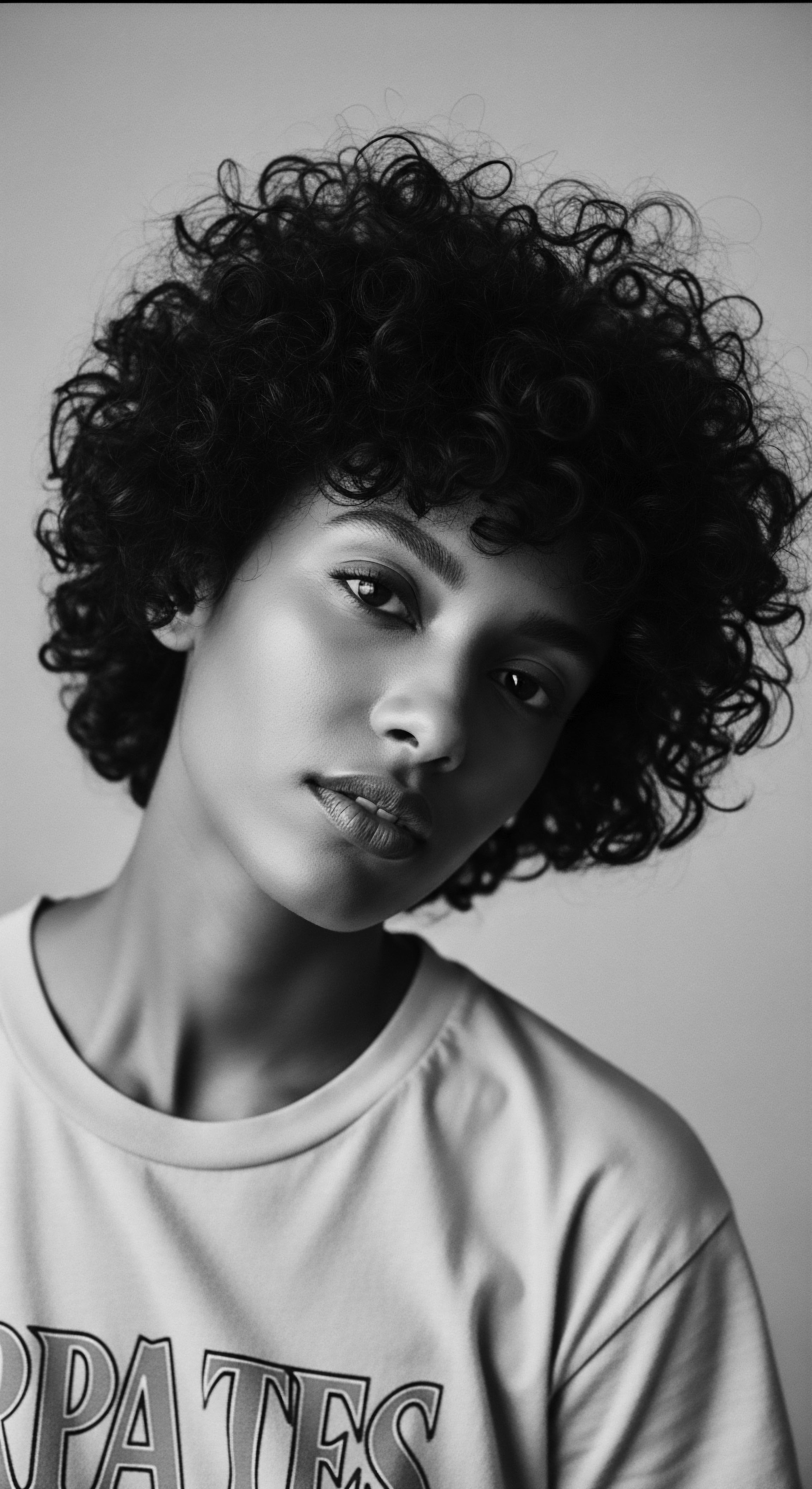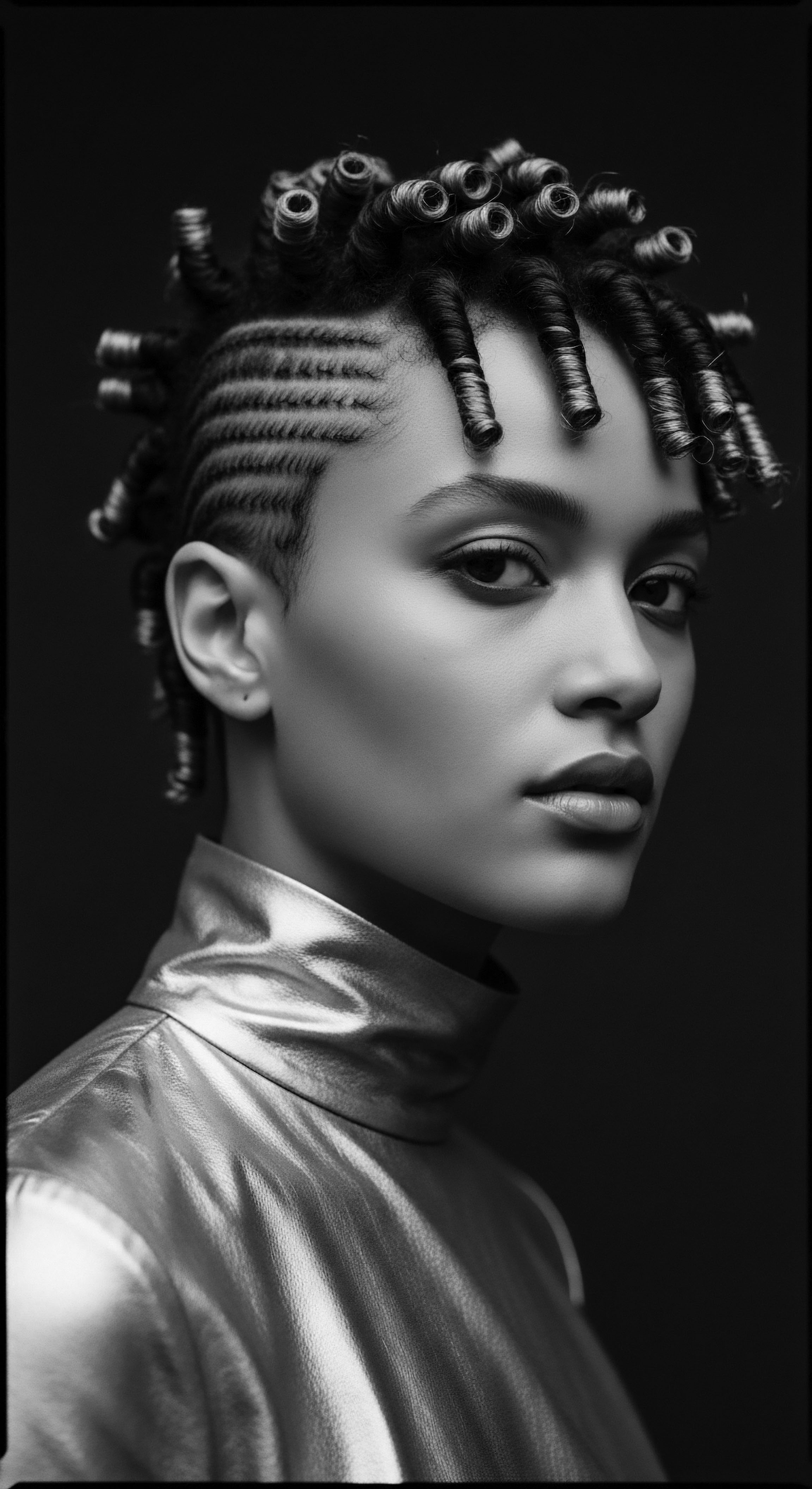A journey into textured hair is a journey into the heart of heritage , a profound meditation on strands that carry stories across generations, continents, and shifting tides of time. This exploration offers insight into how ancient practices, whispers of ancestral wisdom, and the undeniable biology of curl and coil shape identity in the modern world. It is a story told not just through molecules and scalp, but through communal hands, ceremonial adornments, and the fierce resilience of a people. Roothea believes hair is a living archive, each twist and turn a testament to enduring spirit, a conduit of connection to those who came before us.

Roots
The story of textured hair begins at the very source, an elemental biology inextricably tied to the earliest human narratives. Long before written records, before the first comb carved from bone, hair served as a vital aspect of survival, communication, and spiritual connection for various African societies. These were not mere aesthetic choices, but deeply rooted practices reflecting climate, social standing, and belief systems.
For instance, archaeological evidence from ancient Egypt, extending back thousands of years, reveals elaborate wigs and intricate braiding techniques. These were worn by both men and women across social strata, signifying wealth, social standing, and religious devotion, acting as visible symbols of hierarchy.

What Constitutes Textured Hair
Textured hair, particularly that with tighter curls and coils, stands apart in its anatomical nuances. Unlike straighter hair, its cross-section is elliptical, even flattened, and it grows in a helical, spiral fashion. This unique structure creates many points of curvature along the hair shaft. While this helical growth contributes to remarkable volume and versatility, it also presents specific needs for moisture retention and care.
The cuticle, the outer layer of the hair, does not lie as flat as in straight hair, allowing for faster moisture escape. Understanding these intrinsic biological qualities helps us appreciate the traditional practices that naturally addressed these characteristics centuries ago, often without scientific instruments, guided by empirical wisdom passed through oral traditions.

How Did Ancient Classifications Shape Understanding of Hair?
Long before modern classification systems, African societies possessed their own intricate understanding of hair types and their meanings. These were not based on numerical scales but on social, spiritual, and communal contexts. A woman’s hairstyle might convey her marital status, age, or tribal affiliation.
Among the Yoruba, for example, hair was considered the body’s most elevated part, with braided styles serving to send messages to the divine. These traditional distinctions speak to a collective knowledge, where hair was a living canvas of identity and belonging.
The journey of textured hair is one of enduring symbolism, its forms a language of continuity across centuries.
Even the vocabulary used to describe hair in these ancient settings carried depth. Words for specific braiding patterns or adornments held cultural weight, far beyond a simple description of a look. The very act of grooming became a communal experience, strengthening bonds within families and villages, a testament to the shared heritage of care.
This communal aspect continues to hold truth today. When we hear terms such as Cornrows, we are not just naming a style; we are calling forth a history that spans millennia, connecting us to those who braided maps to freedom within their strands.
| Aspect of Hair Hair Structure |
| Ancestral Understanding / Practice Observed through tactile experience; acknowledged need for moisture. |
| Modern Scientific Perspective Elliptical shaft, helical growth pattern, open cuticle layer. |
| Aspect of Hair Care Products |
| Ancestral Understanding / Practice Natural oils, butters, herbs like shea butter, coconut oil, aloe vera. |
| Modern Scientific Perspective Emollients, humectants, protein treatments, pH-balanced formulas. |
| Aspect of Hair Styling Intent |
| Ancestral Understanding / Practice Communication, social status, ritual, protection, identity. |
| Modern Scientific Perspective Aesthetics, manageability, protection from environmental damage. |
| Aspect of Hair Communal Aspect |
| Ancestral Understanding / Practice Core social bonding, intergenerational teaching. |
| Modern Scientific Perspective Can be a social activity, but often individualized, commercialized. |
| Aspect of Hair This table illuminates how ancestral wisdom often intuitively addressed the specific needs of textured hair, aligning with discoveries of contemporary science. |
The foundational lexicon of textured hair, therefore, reaches back into these moments, reflecting terms that describe both the physical manifestations of the hair and their profound social meanings. This deep understanding of hair growth cycles and influencing factors, passed down without textbooks, shaped practices that kept hair healthy in varied climates, using local resources and an innate sense of what the hair required to flourish. The wisdom of these early approaches echoes loudly for us today, offering profound insights for contemporary care.

Ritual
The practices surrounding textured hair are not simply routines; they are rituals, steeped in cultural memory and living traditions. These acts of care, adornment, and transformation form a tender thread connecting generations, embodying shared heritage and communal bonds. Styling, in particular, was and remains a profound form of expression and communication within Black and mixed-race communities. The intricate techniques passed from elder to youth represent more than skill; they represent continuity, identity, and resilience.
For instance, West African traditions, such as the Fulani Braids, adorned with cowrie shells, conveyed marital status and personal story. These practices are far from static, constantly evolving while maintaining their deep roots.

How Have Protective Styles Preserved Ancestral Techniques?
Protective styles, which shield the hair from manipulation and environmental stressors, hold a long and distinguished lineage in textured hair heritage . Styles like Braids, Twists, and Locs were not solely for appearance in ancient Africa. They were often practical solutions for managing hair during labor, signaling tribal identity, or preparing for spiritual rites. During the transatlantic slave trade, when enslaved individuals were stripped of nearly everything, the art of hair braiding endured.
It became a powerful, subtle form of resistance and communication. Enslaved women would sometimes braid rice seeds into their hair before escaping, a tangible map and a literal sustenance, demonstrating extraordinary ingenuity. This historical context underscores the deep meaning embedded in what we now categorize as protective styling. These styles link back to ancient practices of communal grooming, where kin would spend hours tending to one another’s hair, fostering social cohesion and preserving cultural knowledge.

What Historical Tools Guided Textured Hair Care?
The tools employed in traditional textured hair care were often born of necessity and ingenuity, crafted from available natural materials. Combs and Picks fashioned from wood, bone, or metal were common in various African societies. These implements, often beautifully carved, were not merely functional; they were extensions of the care ritual itself, objects that touched and shaped the strands carrying ancestral stories. The use of natural substances, such as Shea Butter, Coconut Oil, and various herbs, formed the foundation of ancient hair care regimens, providing moisture and strength to the hair.
These natural ingredients, often locally sourced, highlight a symbiotic relationship with the environment and a deep understanding of botanical properties for hair wellness. Modern understanding validates the efficacy of many of these traditional ingredients, affirming the wisdom of those who came before us.
The artistry of textured hair styling is a testament to cultural survival and the enduring spirit of creativity.
The history of wigs and hair extensions, too, reaches into antiquity, particularly in ancient Egypt, where they were signs of status and hygiene. This historical precedent offers a different lens through which to view contemporary uses of extensions, connecting them to an ancient lineage of hair adornment and transformation. Even what we perceive as modern heat styling has echoes, albeit rudimentary, in past methods of shaping hair, though always with a different approach to the hair’s resilience. The complete textured hair toolkit, then, is a continuum, from the meticulously crafted combs of antiquity to the advanced tools of today, each serving the ultimate purpose of care and expression.
- Cornrows ❉ Ancient braiding patterns worn close to the scalp, serving as symbols of tribal affiliation, age, and social status, and even as maps for escape during enslavement.
- Bantu Knots ❉ A protective coiling technique originating from the Zulu people of Southern Africa, used for defining curls and stretching hair.
- Oils and Butters ❉ Natural emollients like shea butter and coconut oil, used for centuries to seal moisture, improve hair pliability, and impart shine.

Relay
The journey of textured hair from historical practices to modern identity is a profound relay, a passing of the torch where ancestral wisdom informs contemporary understanding and self-definition. It is within this intricate exchange that the complex interplay of cultural legacy, personal affirmation, and societal recognition truly manifests. The legacy of hair discrimination, rooted in colonial ideologies that devalued tightly coiled hair, remains a pertinent, ongoing struggle.
In South Africa, for instance, the “pencil Test” during apartheid determined racial classification and access to privileges based on whether a pencil held in one’s hair would fall out. This stark example demonstrates how deeply hair texture became intertwined with systemic oppression, a historical weight many still navigate.

How Do Ancient Rituals Inform Modern Hair Wellness?
The modern hair care regimen, particularly for textured hair, often finds its most effective answers by looking back to ancestral wisdom. Building a personalized textured hair regimen today often involves re-engaging with traditional principles ❉ prioritizing moisture, minimizing manipulation, and using natural ingredients. The holistic influences on hair health, deeply rooted in ancestral wellness philosophies, viewed hair not in isolation but as an integral aspect of overall well-being. This perspective recognized the symbiotic relationship between diet, internal balance, and hair vitality.
Modern science, in many ways, validates these long-standing traditional practices. The understanding of hair as a spiritual antenna in many African cultures, where it was considered a conduit to the divine, encouraged mindful care that extended beyond the physical.
The reclamation of textured hair is a powerful statement of self-acceptance, a conscious connection to a rich ancestral past.
One compelling example of this continuity is the nighttime sanctuary, specifically the wisdom surrounding sleep protection. The use of bonnets, head wraps, or silk scarves for sleep has a history that speaks to practical care and cultural continuity. While the specific accessories may have varied across regions and eras, the underlying principle of protecting hair from tangling, breakage, and moisture loss during sleep is an ancient one.
This seemingly simple practice underscores a deep, inherited understanding of textured hair’s delicate nature and its need for gentle preservation. It is a quiet, daily ritual that links back to ancestral self-preservation and care.

What Role Does Hair Play in Social Justice Movements?
Textured hair has served as a powerful symbol of identity, resistance, and political expression throughout history, especially in the context of the Black diaspora. The “Black Is Beautiful” movement of the 1960s and 70s saw the Afro rise as a prominent statement against Eurocentric beauty standards. Figures like Angela Davis proudly wore their Afros, transforming hairstyles into acts of political defiance and cultural reclamation. This historical moment marked a significant shift, encouraging Black individuals to celebrate their natural hair as an inherent part of their identity.
This was not a superficial trend; it was a profound assertion of selfhood in the face of systemic devaluation. The ongoing movement for natural hair acceptance, culminating in legislative efforts like the CROWN Act (Creating a Respectful and Open World for Natural Hair), directly addresses the historical and persistent discrimination faced by individuals with textured hair in workplaces and schools. These legal battles represent the contemporary extension of a centuries-long fight for the right to embody one’s heritage freely. Studies have shown that Black women are significantly more likely to be labeled unprofessional due to their hair and often feel compelled to alter their natural hair texture to conform to organizational norms (Dove, 2019).
The very act of wearing one’s natural texture, or choosing protective styles that honor African lineage, becomes a form of cultural continuity and a statement against oppressive beauty ideals. It is a re-centering of beauty standards, defined by those who possess this hair, rather than external, often discriminatory, forces. The enduring significance of braiding, for example, is not merely as a practical style, but as a cultural language passed down, carrying messages of strength and collective identity.

Reflection
The textured strand, a marvel of natural design, holds within its coils and curves a boundless heritage . It is a testament to the enduring spirit of communities who have, through centuries, maintained a profound connection to their hair, despite immense societal pressures and historical injustices. The journey from ancient rituals of care, often communal and deeply symbolic, to the contemporary affirmations of natural texture, reveals a continuous thread of resilience, creativity, and self-definition.
Each historical practice, from the deliberate crafting of traditional tools to the ceremonial significance of specific styles, has left an indelible mark on how modern identity is shaped and expressed. When we engage with textured hair today, we are not simply tending to a physical attribute; we are partaking in a living archive, honoring the wisdom of ancestors, and contributing to a legacy that continues to unfold, inspiring future generations to cherish their own unique strands as crowns of their innate heritage .

References
- Akanmori, Harriet. “Hair and Hairstyles, Traditional African.” In The SAGE Encyclopedia of African Cultural Heritage in North America. SAGE Publications, Inc. 2015.
- Byrd, Ayana D. and Lori L. Tharps. Hair Story ❉ Untangling the Roots of Black Hair in America. St. Martin’s Press, 2001.
- Dabiri, Emma. Don’t Touch My Hair. HarperCollins, 2019.
- Dove, C. “CROWN Research Study.” Unilever, 2019.
- Essel, Essilfie T. “Historical Roots of Makai Hairstyle of Elmina People of Ghana.” International Journal of Arts and Social Science 6, no. 10 (October 2023) ❉ 220-229.
- Kandil, Hoda Abd Allah, and Mahmoud El-Mohamdy Abdelhady Salama. “Role of the Hair in Ancient Egypt.” International Journal of Tourism and Hospitality Management 1, no. 1 (June 2018) ❉ 77-85.
- Rosado, Sybil Dione. “Nappy Hair in the Diaspora ❉ Exploring the Cultural Politics of Hair Among Women of African Descent.” PhD diss. University of Florida, 2007.
- Sieber, Roy, and Frank Herreman. Hair in African Art and Culture. Museum for African Art, 2000.
- Synnott, Anthony. “Shame and Glory ❉ A Sociology of Hair.” The British Journal of Sociology 38, no. 3 (September 1987) ❉ 381-413.
- Thompson, Cheryl. “Black Women and Identity ❉ What’s Hair Got to Do With It?” Canadian Woman Studies 27, no. 2-3 (2009) ❉ 173-178.
